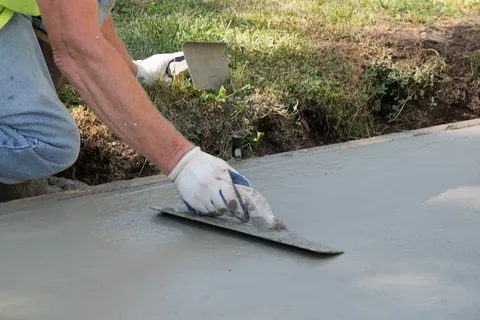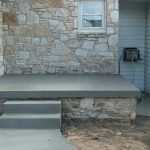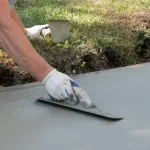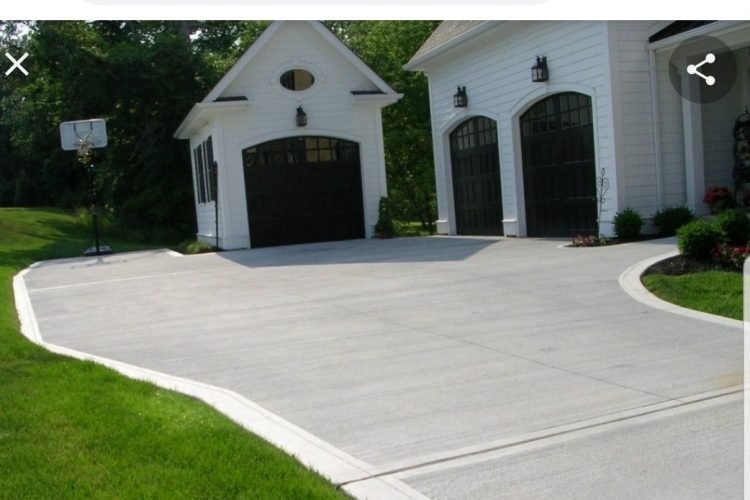
Concrete is one of the most widely used building materials in the world. From driveways, sidewalks, and patios to bridges, high-rise buildings, and highways, concrete forms the backbone of modern infrastructure. Its durability and strength make it a top choice for construction. However, like all materials, concrete is not immune to damage. Over time, it can develop cracks, spalling, or other forms of deterioration due to environmental stress, poor installation, or heavy usage. That’s where concrete repair comes in.
Concrete repairs are not just about improving the appearance of a structure—they play a vital role in restoring safety, extending the lifespan of concrete surfaces, and preventing small problems from escalating into costly replacements. In this blog, we’ll dive deep into the importance of concrete repairs, common causes of damage, repair techniques, and tips to maintain long-lasting results.
Why Concrete Repairs Are Important
Concrete structures may look indestructible, but even the strongest concrete can weaken over time. Repairing damage as soon as it’s identified ensures the following benefits:
- Restores Structural Integrity
Cracks and surface damage weaken the load-bearing capacity of concrete. Repairs strengthen the affected area and ensure it can handle the weight and stress it was designed for. - Enhances Safety
Damaged concrete, such as uneven sidewalks or deteriorating stairs, can pose trip hazards or even lead to severe accidents. Timely repairs eliminate these risks. - Saves Money in the Long Run
Small cracks or chips might not look serious, but if ignored, they can expand due to moisture penetration and freeze-thaw cycles. Fixing minor issues is far more affordable than replacing entire slabs. - Improves Aesthetic Appeal
Cracked or stained concrete can make a property look neglected. Repairs restore the clean and polished look, boosting curb appeal and property value. - Extends Lifespan
Repairing damaged sections and applying protective coatings can add decades to the life of concrete structures.
Common Causes of Concrete Damage
Understanding why concrete fails helps in preventing future problems. Some of the most common causes include:
- Weather Exposure: Constant exposure to rain, snow, and sunlight can cause expansion, contraction, and erosion.
- Freeze-Thaw Cycles: In colder climates, water seeps into cracks, freezes, and expands, making cracks grow larger.
- Heavy Loads: Driveways, roads, and industrial floors carrying heavy machinery or vehicles often develop surface cracks and stress damage.
- Poor Installation: Inadequate mixing, improper curing, or lack of reinforcement can lead to premature deterioration.
- Chemical Damage: Exposure to de-icing salts, oils, or chemicals can corrode reinforcement steel within concrete, causing spalling and cracks.
- Aging: Even the best concrete will degrade with time due to natural wear and tear.
Types of Concrete Damage
Concrete damage can appear in various forms, each requiring a specific repair approach.
- Cracks
- Hairline cracks are common and often superficial.
- Structural cracks are deeper and indicate a more serious issue with load capacity or foundation movement.
- Spalling
This occurs when the surface of concrete flakes or chips away, usually due to freeze-thaw damage or corrosion of reinforcement steel. - Scaling
Thin layers of the concrete surface peel away due to water penetration or poor finishing. - Potholes
Common in driveways and roads, potholes develop when underlying concrete weakens and breaks apart. - Discoloration or Stains
While not always structural, stains from chemicals, rust, or mold can affect the appearance of concrete.
Concrete Repair Methods
Concrete repair is not one-size-fits-all. Different problems require specific repair techniques:
1. Crack Repairs
- Epoxy Injection: Used for structural cracks, epoxy fills and bonds cracks to restore strength.
- Routing and Sealing: Small surface cracks are widened slightly, cleaned, and sealed with flexible sealant to prevent water penetration.
2. Resurfacing
If the surface of the concrete is damaged but the base is intact, a thin overlay or resurfacer is applied to restore appearance and durability. This is common for driveways, patios, and pool decks.
3. Patching
Potholes, chips, or localized damage can be patched using specialized concrete repair compounds. Proper surface preparation is key to ensure the patch bonds effectively.
4. Spalling Repair
Damaged concrete is removed, and new concrete or repair mortar is applied. In cases involving corroded rebar, the steel is cleaned and treated before repairs.
5. Slab Jacking (Mudjacking)
For sunken concrete slabs (such as sidewalks or driveways), a mixture is pumped underneath to lift the slab back into place.
6. Waterproofing and Sealing
Applying waterproof coatings or sealants after repair helps protect against moisture, salts, and chemicals, preventing future damage.
DIY vs. Professional Concrete Repairs
Some small concrete repairs, such as filling minor cracks, can be handled by homeowners with DIY kits. However, larger or structural problems should always be addressed by professionals.
- DIY Repairs: Suitable for cosmetic cracks, small patches, and applying sealants.
- Professional Repairs: Needed for deep cracks, spalling, structural damage, or sinking slabs. Professionals have the tools, expertise, and materials to ensure repairs are safe and long-lasting.
Tips for Long-Lasting Concrete Repairs
- Act Quickly
Address damage as soon as it appears to prevent worsening conditions. - Use Quality Materials
Cheap fillers or sealants may provide temporary fixes but won’t last long. - Ensure Proper Preparation
Clean and dry the surface thoroughly before applying any repair material to improve adhesion. - Seal and Protect
Regularly apply concrete sealers to guard against moisture, stains, and chemicals. - Regular Maintenance
Inspect concrete surfaces periodically for early signs of damage, especially after harsh weather.
Preventing Concrete Damage in the Future
While repairs are essential, prevention is equally important. Here’s how to protect your concrete surfaces:
- Install proper drainage systems to prevent water accumulation.
- Avoid using harsh de-icing salts that corrode concrete.
- Use reinforcement materials like rebar and fiber mesh during construction.
- Ensure professional installation and curing for new concrete projects.
- Apply protective coatings periodically to shield against weather and chemicals.
Conclusion:
Concrete repairs are more than just fixing cracks or filling holes—they are about ensuring the long-term safety, durability, and functionality of one of the most essential building materials. Whether it’s a small residential driveway or a massive commercial structure, addressing damage promptly can save money, prevent accidents, and restore structural integrity.
If you notice cracks, spalling, or uneven surfaces, don’t wait for the problem to worsen. Reach out to a professional concrete repair service to restore strength and beauty to your surfaces. With the right repair techniques and preventive measures, concrete can continue serving its purpose for decades to come.






